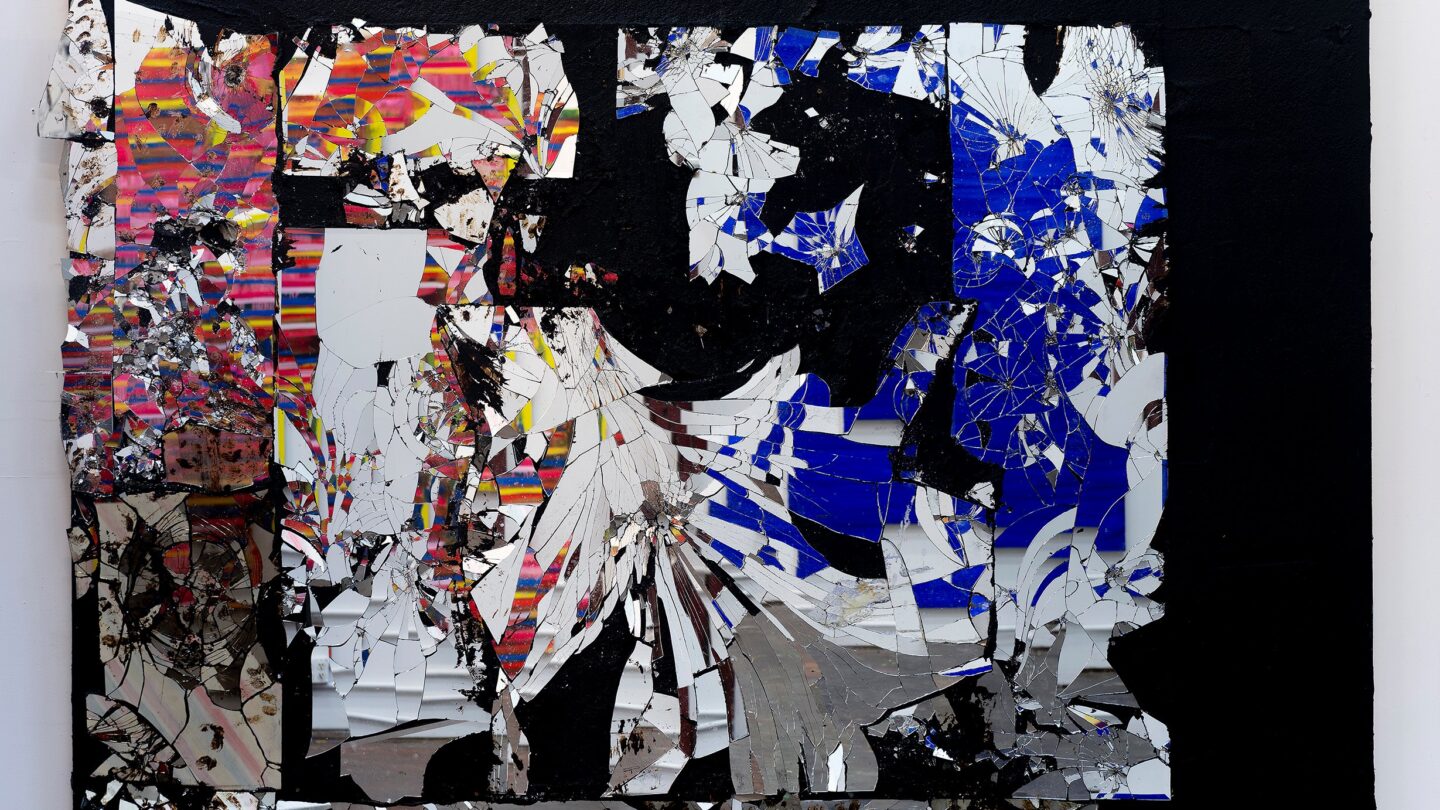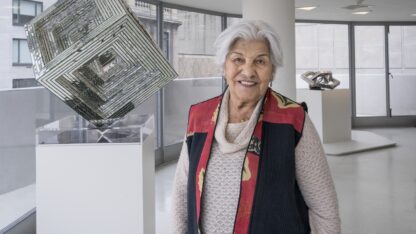The career of renowned artist Michael David has spanned several decades, with inspiration from abstract expressionism to punk rock. His works are in permanent collections, including those of the Metropolitan Museum of Art, the Guggenheim Museum, and the Brooklyn Museum, among many others. His most recent body of work, “The Mirror Stage,” was created using hundreds of pounds of broken mirror, pushing the boundary between painting and sculpture.
“The Mirror Stage” is on view in Atlanta at the Bill Lowe Gallery through Jan. 7. David joined “City Lights” via Zoom to talk more about the process and meaning behind his newest work.
Interview highlights:
A creation that began with a dream:
“I was sharing a studio up in Tivoli, New York, with the painter Astrid Dick, at Judy Pfaff’s where I was working for a year and a half, and she had never seen my original symbol paintings. She said, ‘When you did these, you had a vision,'” David recalled. “I don’t believe in visions, but I just did them without any thinking. She certainly has visions about [talking] to all poets and historians and writers in her own visions. And I went to sleep, and then three days later, I just woke up, and I saw these paintings, and I just knew that I had to do them.”
“I know historically there were other artists who had dreamed about things, and then when they did them, they had to do them. Not to compare myself in terms of level of quality, but certainly [Jasper] Johns dreamed the flags, and Paul McCartney dreamed ‘Yesterday,’ the melody for that. And when you dream something, you’re definitely tapping into a kind of collective unconsciousness, which is also very, very personal, simultaneously.”
Artwork made complete by the reflection of its viewer:
“I think that’s implicit in all creative experiences, whether it’s music, dance, painting, film. You do complete the connection between the author of those endeavors and the viewer. But in this, it distills it in a way that that is the essence of it, without much around it besides that. So for me, it was a way to complete my own history as a painter, my own life, and to look back on it, and to accept the fact that we are all complicated, fractured, broken, and how we put ourselves together and reflect on our lives is what the essence of the paintings were about to me,” said David.
“It goes back to some of my roots, you know, in ‘Ab-Ex’ [or Abstract Expressionism] and punk, where basically, I have three chords, and I play fast,” David mused. “So I’m always looking for the essence of something. So this reduced, ultimately, what I believed about the essence of creativity into this notion of participation in one with the viewer.”
On breaking things to create “The Mirror Stage:”
“The first ones were Home Depot, because it was cheap and easy to break,” David said.”Then… I used some antique mirrors that I found, which were harder to break, but a very different presence. And finally, up in Kingston, outside of when we were up at Judy’s, we found this pink mirror, which is very, very rare; it’s, like, 70 years old. No one had seen it before, and I was loath to break it, and then finally, I put it in a painting called ‘Pink Moon,’ which is this incredible song by Nick Drake, and I’ve used it in that, and I wish I could get more of it, but you can’t find it.”
“Certainly, creativity is coupled with destruction. It’s not always additive, and it’s not always based on a positive move forward. In fact, one of the quickest ways to improvisation is through, whether it’s in painting or anything else, is through something that is destructive, without the value judgment,” David said. “You deconstruct something, you break it down, and then you reassemble it, because in that moment, you are so present and so fast that you take yourself outside of it, and it allows you to improvise and be spontaneous, and directly connected to the act. It is one of the tools of improvisational painting, or even jazz.”
Michael David’s “The Mirror Stage” collection is currently on view at the Bill Lowe Gallery through Jan. 7. More information is available at https://lowegallery.com/michael-david-the-mirror-stage









